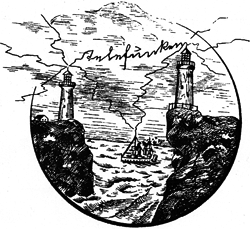The Integration of Infrastructures in Europe before the Great War and after the Second World War in comparison
Sub-project: Integration of Radio

Gesellschaft für drahtlose Telegraphie - System Telefunken
Source:Telefunken-Zeitung, 1. Jg., Nr. 1, Juli 1911, Titelblatt
Since the 1890s radio underwent a remarkable development. It soon established itself as an important element for cross border telecommunications in Europe. New services like broadcasting or amateur radio were triggered and it was adopted for navigation and communication purposes by shipping and aviation. Today’s information society is inconceivable without radio. This sub-project will examine the integration of radio by analysing the examples of maritime radio networks on long waves and on very high frequencies (VHF) prior to the Great War and after the Second World War.
Maritime services on long waves were the most important application of radio prior to the Great War. Private companies soon dominated their operation. This led to strong competition between the ‘Marconi Wireless Telegraph Company’ and the German ‘Telefunken-Gesellschaft’. Marconi tried to establish a global monopoly for production and operation and therefore refused any kind of intercommunication between competing radio systems. At the beginning of the 20th century the German government then urged European governments to agree on uniform regulations for radio. A first international conference was set up in Berlin in 1903 in order to devise technical, operational, administrative and juridical standards. This conference, which can be considered interference into the market by politics, triggered a continuous process of establishing international rules and organisations for radio.
After the Second World War the establishment of VHF maritime services will be analysed. This time the major issues of negotiations were of technical and operational nature. The motivations of the agents involved were profitability, flexibility and security of VHF radio services. In contrast to the period before the Great War, where regulations needed to be uniform across Europe due to propagation characteristics, the regulations for VHF could be designed more flexible. VHF standards were negotiated within the organisational framework of the International Telecommunication Union (ITU), which got a good reputation in the interbellum. It had established committees, conferences and a set of formal and informal negotiation routines. Within this institutional framework standardisation of VHF maritime services turned to smooth activities. Agents from politics and the economy cooperated closely in order to guarantee securities for investments. Associations of ship owners and the industry were allowed to participate in governmental negotiations. Although they just had an advisory capacity they strongly influenced the outcome.
The aim of this sub-project is to illustrate similarities and differences in the international negotiations on the establishment of maritime radio networks under the particular institutional, technical and economic conditions prior to the Great War and after the Second World War.
Project outline
